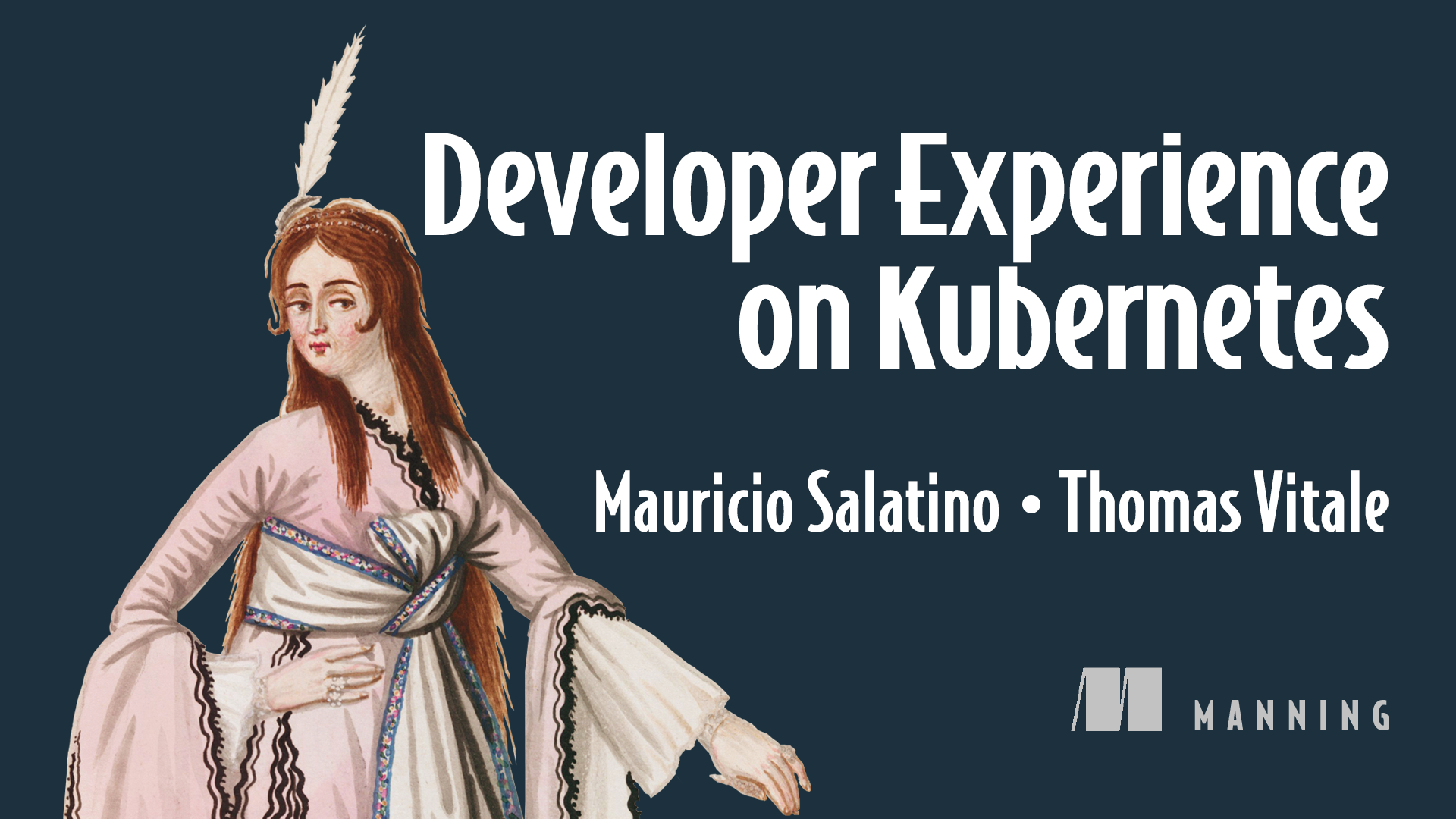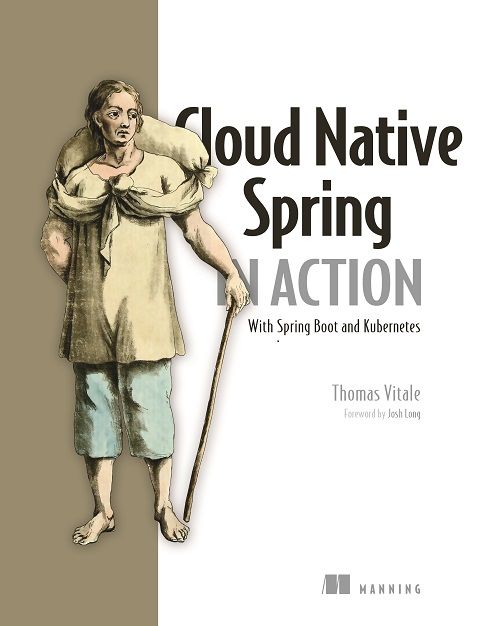Books
In this page, you can find more information about my books Cloud Native Spring in Action and Developer Experience on Kubernetes.
Developer Experience on Kubernetes
Discover the joy of building and managing cloud native applications on Kubernetes as an application developer.

Developer experience —the tools, workflows, interfaces, and patterns you use to build applications—is critical to the success of any Cloud Native project. Good developer experience abstracts away the inherent complexity of a Kubernetes system, offering developers a fast path to productivity.
In Developer Experience on Kubernetes, you will learn how to:
- Create and manage an end-to-end developer environment on Kubernetes
- Identify and efficiently resolve application developer pain points
- Communicate and collaborate with other development teams
- Self-service cloud native runtimes and services
- Evaluate and adopt tools and processes for observability, CI/CD integration, local development, and more
- Build hands-on projects using Go and Java
Developers thrive when they can focus on problem-solving rather than wrestling with tooling complexity or inefficient processes. A positive developer experience empowers software creators to deliver value to their customers by maintaining flow and productivity. Good developer experience combines development tools, frameworks, platforms and organizational processes into a well-designed, low-friction development infrastructure.
Cloud Native Spring in Action
Manning | Amazon | Chinese Translation | Korean Translation
Build and deliver production-grade cloud native applications with Spring Boot and Kubernetes.

Cloud Native Spring in Action is a practical guide to building applications that are designed for cloud environments. You'll learn effective Spring and Kubernetes cloud development techniques that you can immediately apply to enterprise-grade applications.
Follow a detailed and complete cloud native system from first concept right through to production and deployment, learning best practices, design patterns, and little-known tips and tricks for pain-free cloud native development. Including coverage of security, continuous delivery, and configuration, this hands-on guide is the perfect primer for navigating the increasingly complex cloud landscape.
In Cloud Native Spring in Action you'll learn:
- Cloud native best practices and design patterns
- Build and test cloud native apps with Spring Boot and Spring Cloud
- Handle security, resilience, and scalability in imperative and reactive applications
- Configure, deploy, and observe applications on Kubernetes
- Continuous delivery and GitOps to streamline your software lifecycle
The book is divided into four parts. Part 1 will guide you through the cloud native landscape, defining what it means for an application to be cloud native, and establishing tools, technologies, and patterns you’ll bring on your journey.
Part 2 will get you started with the fundamentals of cloud native development. You’ll work with RESTful Spring application services and data persistence, understand how to manage configuration across environments, define automation for your continuous integration process, learn how the Docker containerization works, and finally deploy your apps to a local Kubernetes cluster.
In Part 3, your journey gets to a whole new level. You’ll move from a single app to a distributed system in the cloud. You’ll learn about service discovery, load balancing, scalability, and resilience. You’ll then explore the features of event-driven architecture and secure your system with authentication, authorization, and encryption.
In Part 4, you’ll ensure the observability of your applications, dealing with logging, tracing, and monitoring. Finally, you’ll get to the long wished for destination: production. You’ll learn how to deploy your application to a Kubernetes cluster in a public cloud, and automate the delivery and deployment process. A new journey starts in production. You’ll get familiar with the next steps in your cloud native adventure and learn some tips on migrating your existing applications.
If you read the book, please let me know your thoughts on Bluesky, LinkedIn, Mastodon or in the Manning liveBook discussion forum. I'd appreciate to get your feedback.